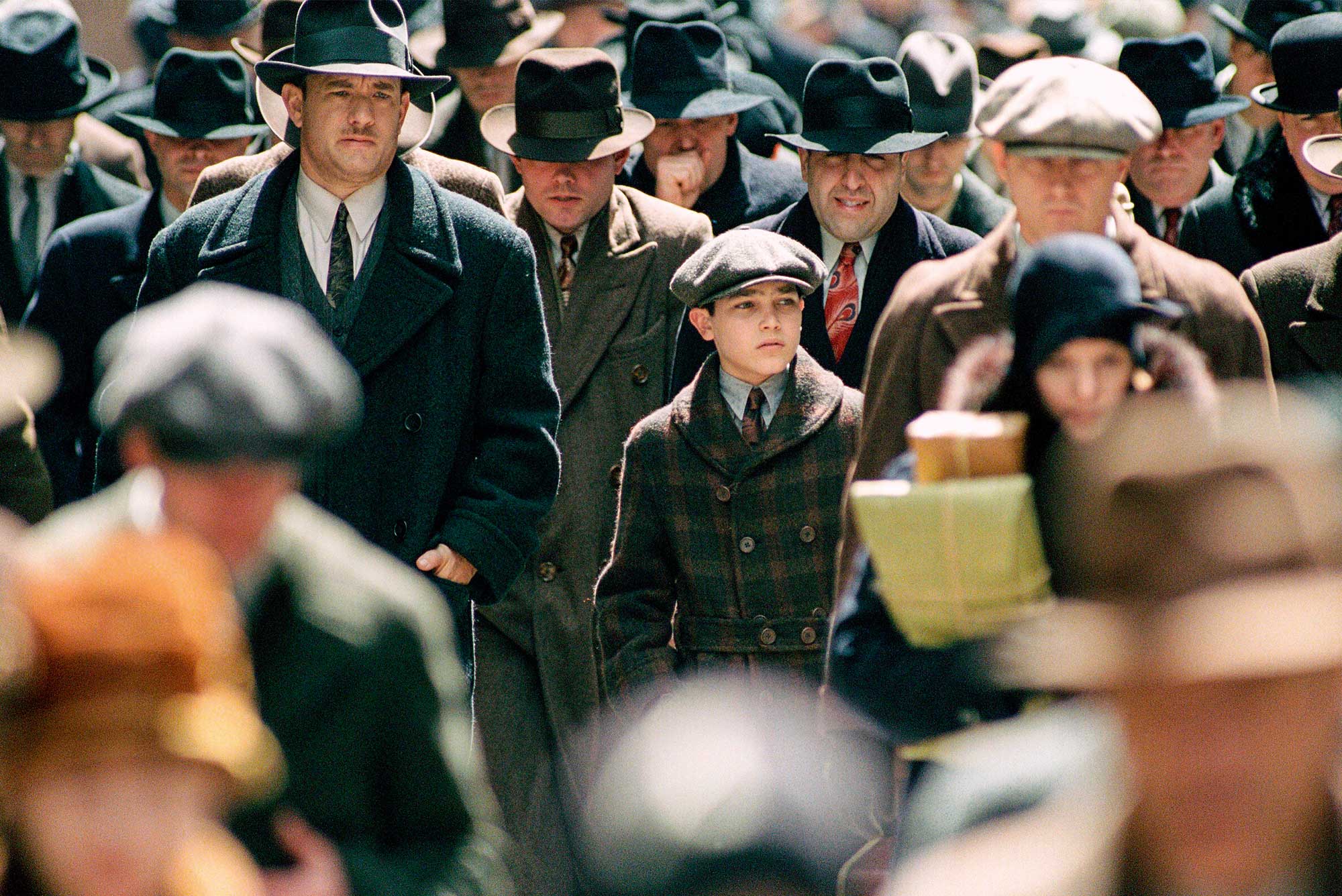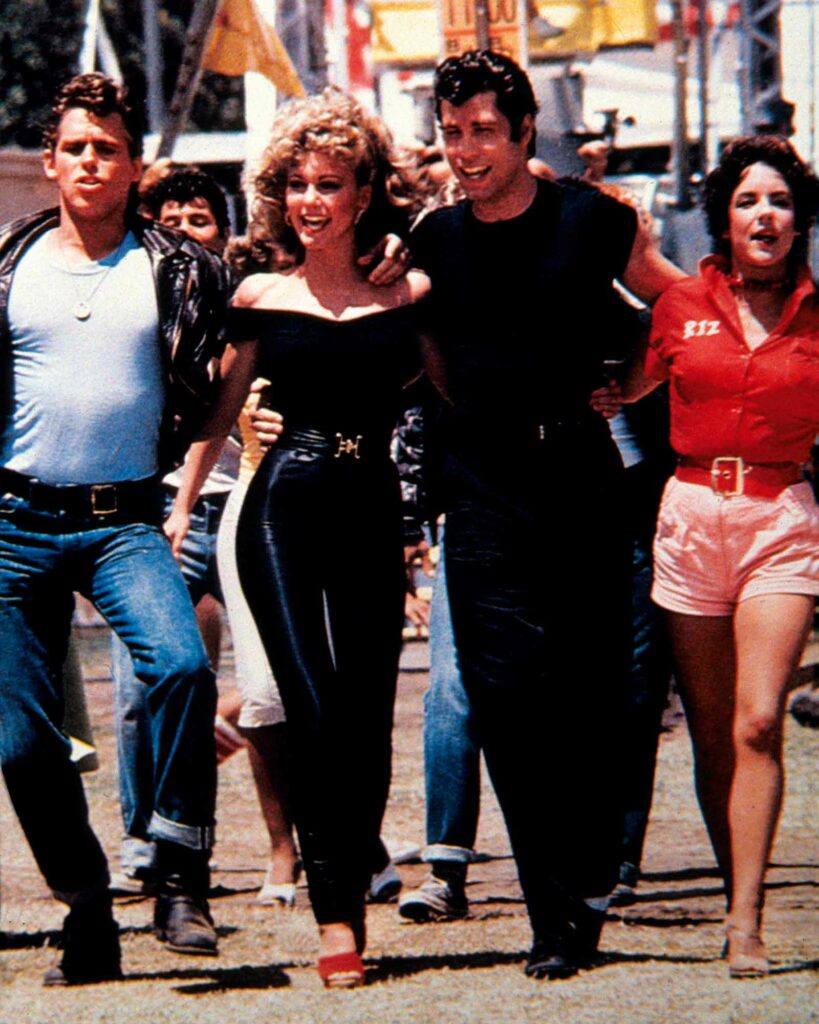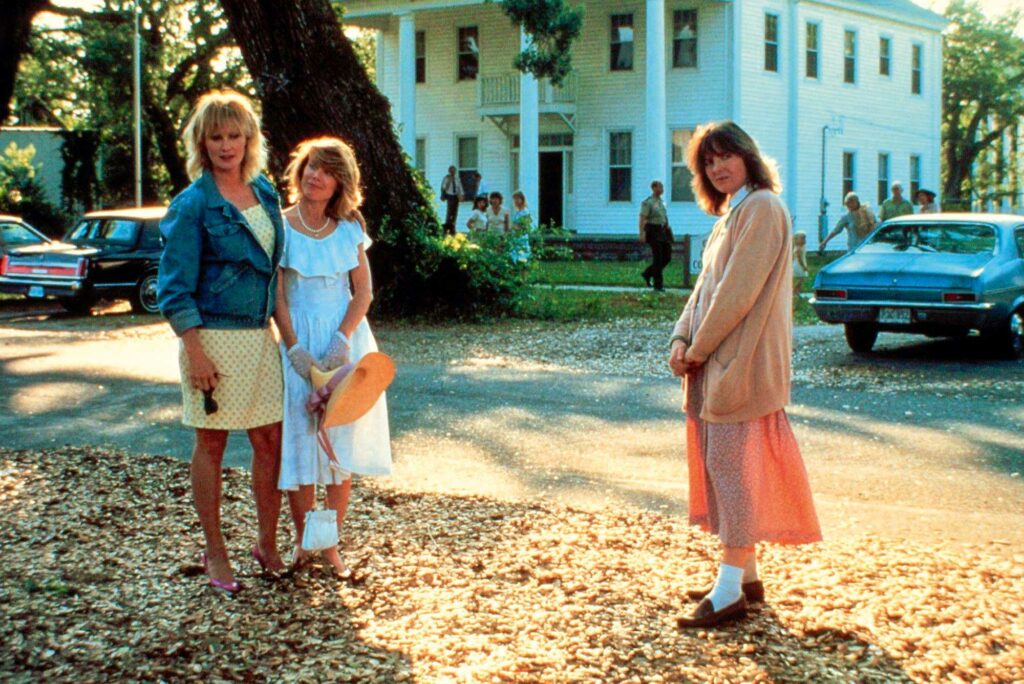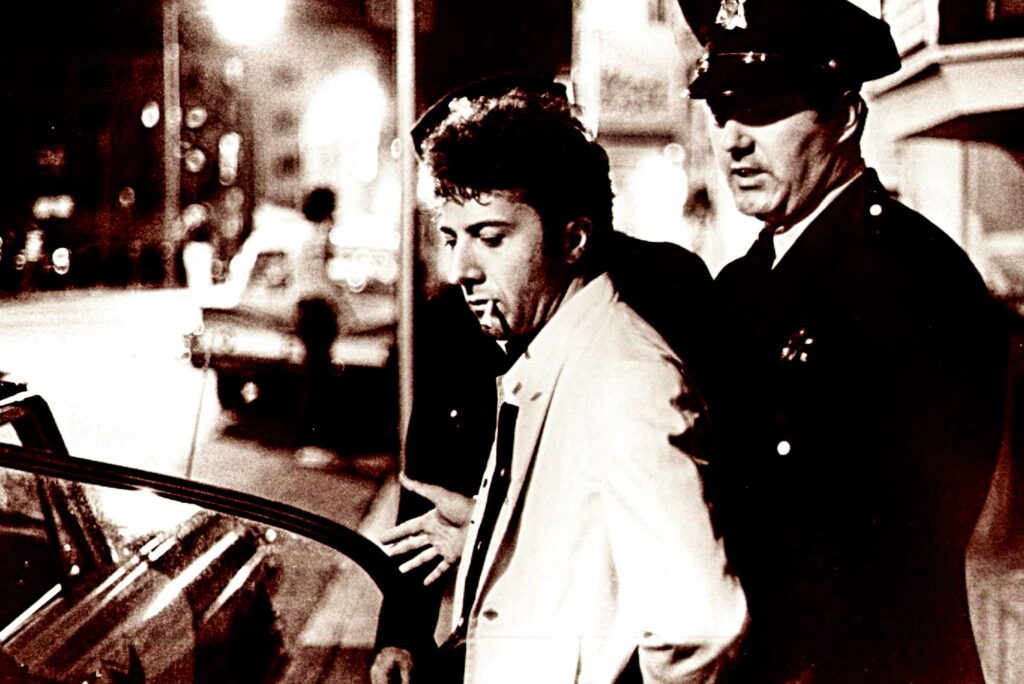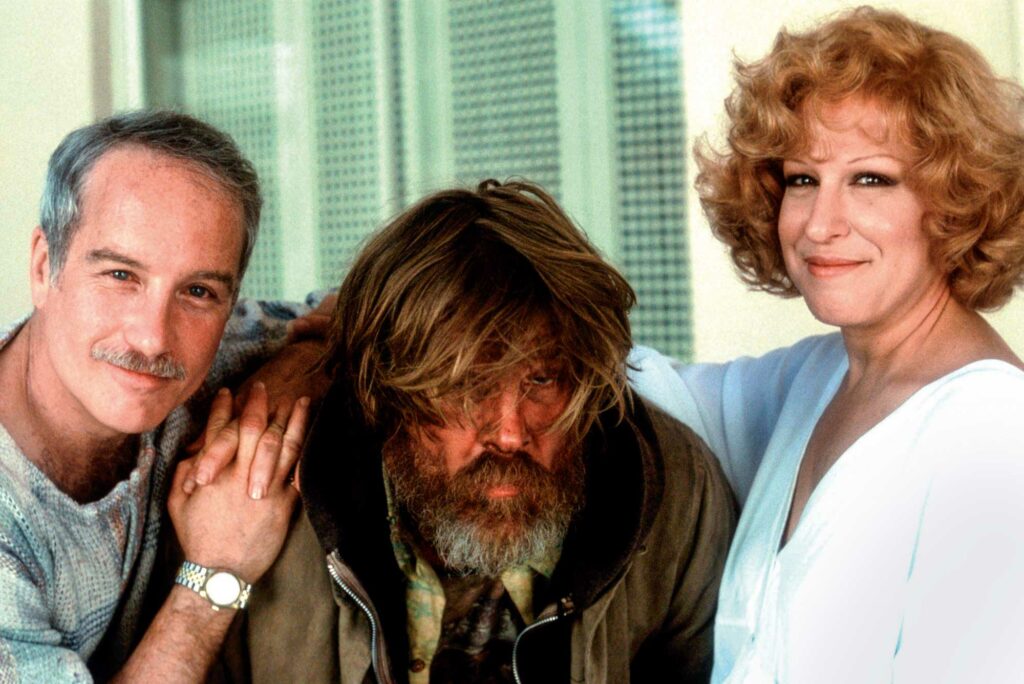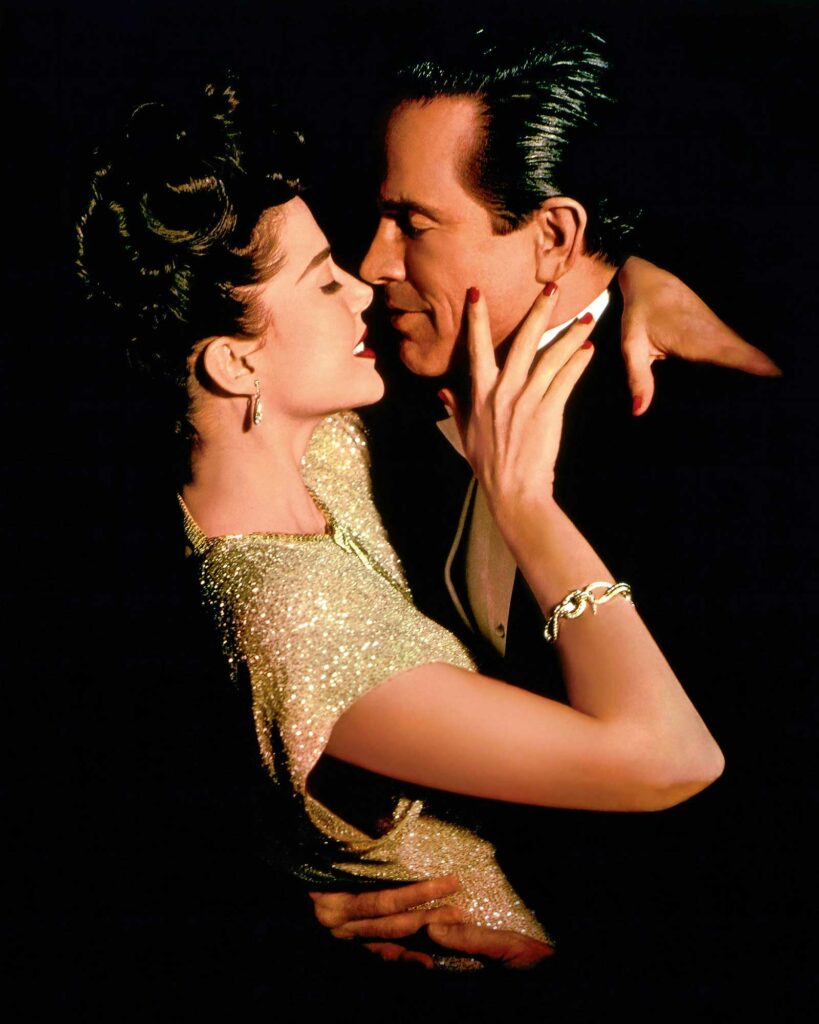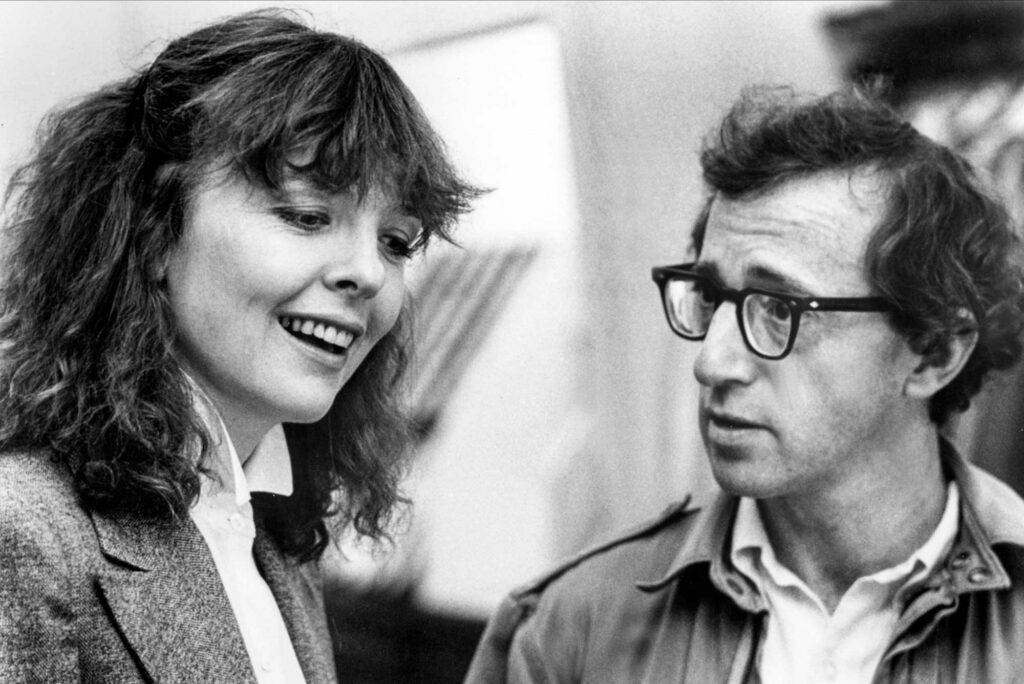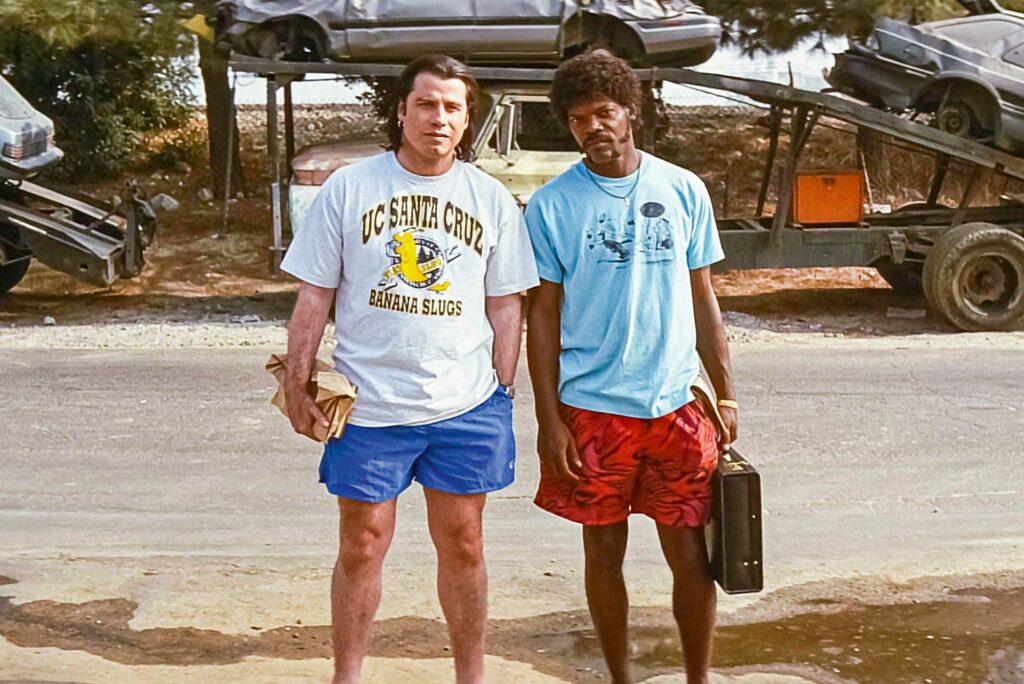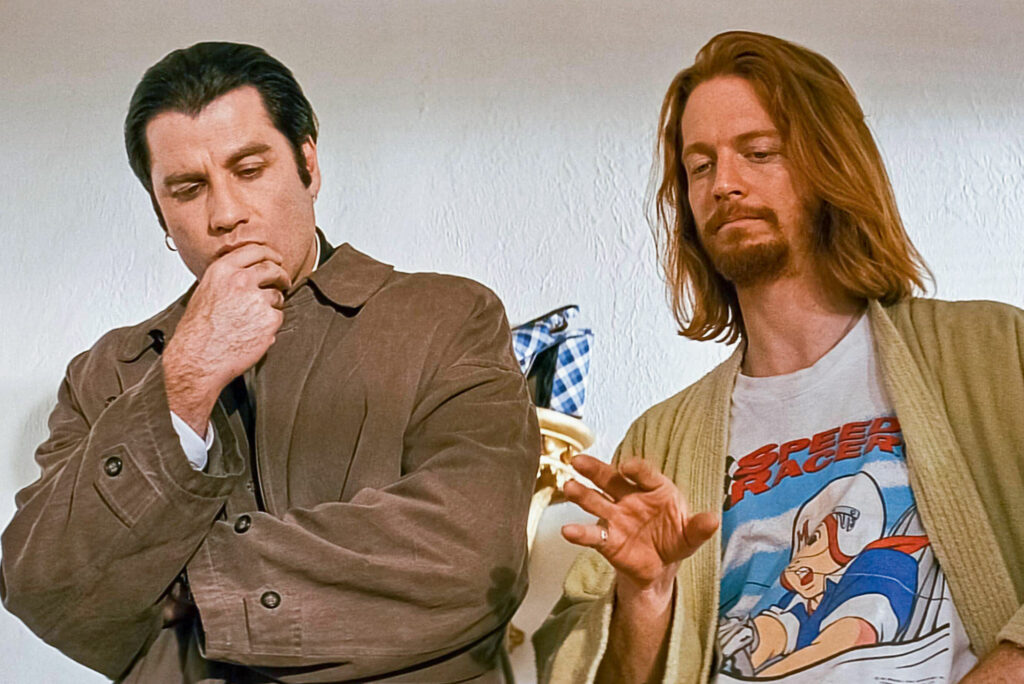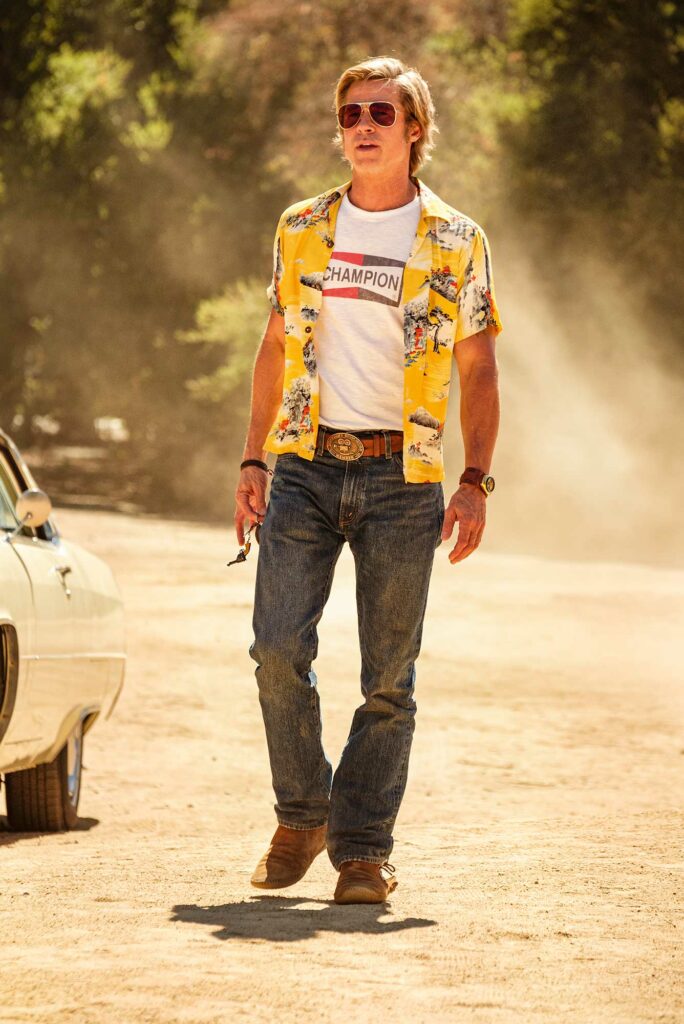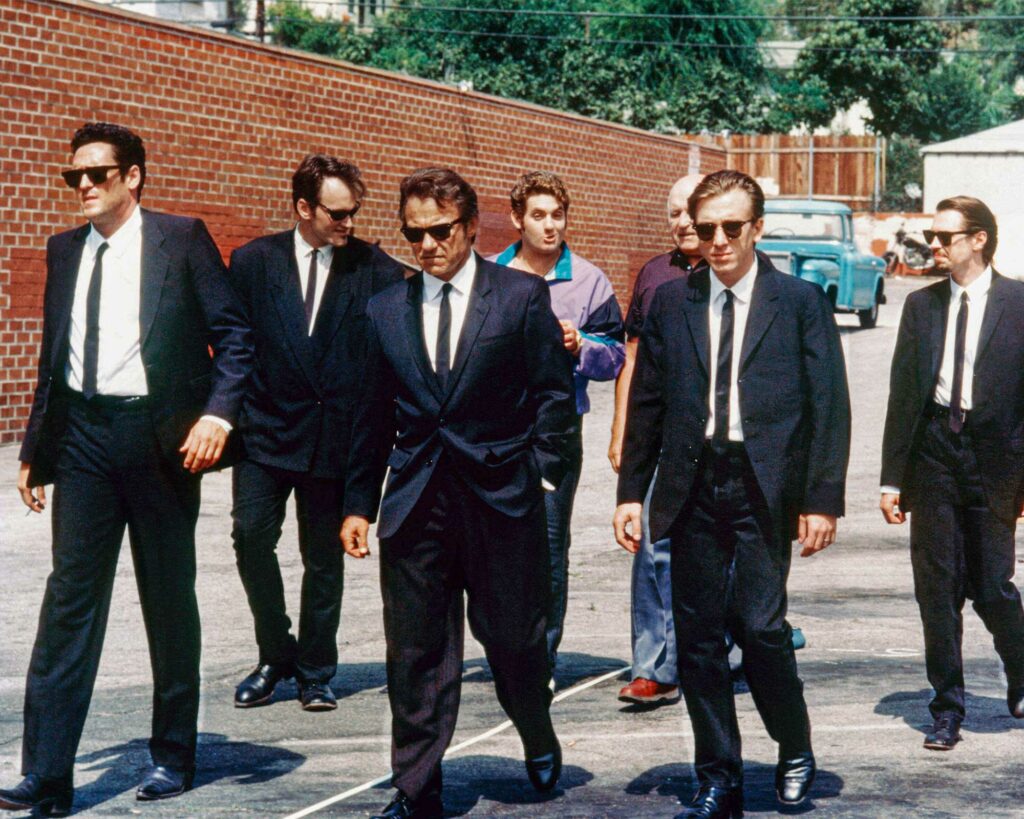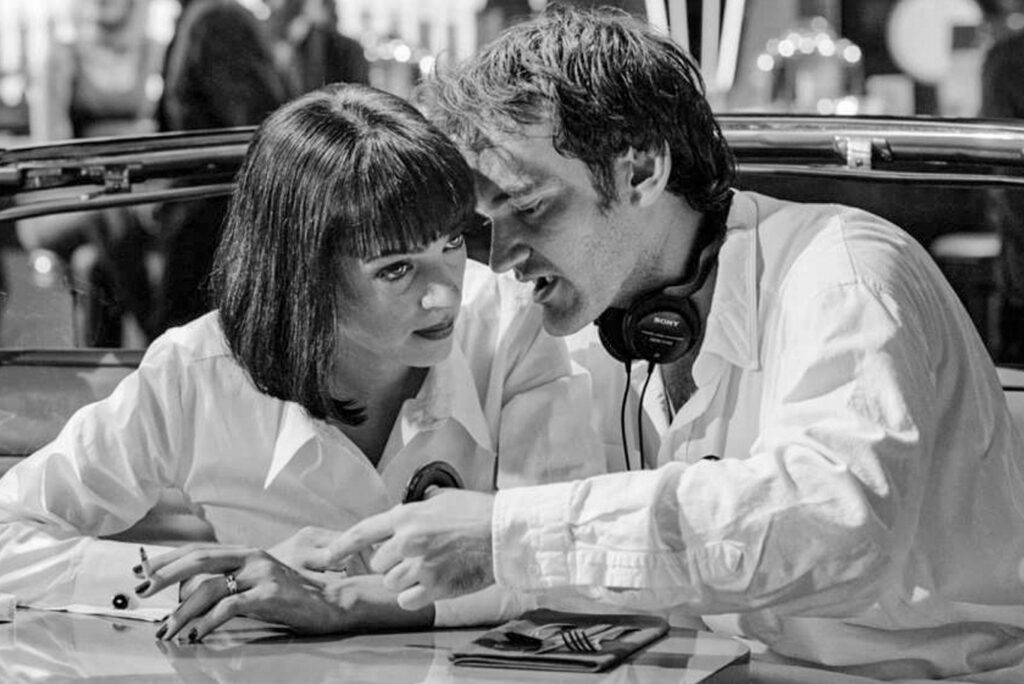Words by JEREMY LANGMEAD
Hollywood Authentic’s correspondent, costumier Arianne Phillips, has the tables turned as she looks back at her own illustrious career crafting clothing for films including A Single Man, Once Upon a Time… in Hollywood, Joker: Folie à Deux and the upcoming Dylan biopic A Complete Unknown.
Arianne Phillips is one of the most prolific, talented and versatile costume designers working in the industry today. She has won acclaim and award nominations for everything from giant commercial blockbusters to influential art-house movies, iconic music videos to Madonna’s concert tours, and worked with an enviable array of directors and actors. Arianne is also a favourite of the fashion world: her costume designs for Tom Ford’s A Single Man, Quentin Tarantino’s Once Upon a Time… in Hollywood, and Madonna’s W.E. have inspired designers and led to her working with Prada and designing menswear collections alongside Matthew Vaughn for the retailer Mr Porter. She’s also responsible for the costumes of two of the most anticipated films of the moment: Joker: Folie à Deux by Todd Phillips and A Complete Unknown, James Mangold’s forthcoming Bob Dylan biopic starring Timothée Chalamet. So, it seemed the right time to put Hollywood Authentic’s costume correspondent under the spotlight for a change.
JL: When we worked together on a 2019 documentary that Lenny Kravitz and I executive produced about you – Arianne Phillips: Dressing the Part – we described you as the misfit rebel who became a powerful creative force in both the movie and fashion industries. How did that misfit rebel successfully succeed in two notoriously competitive industries?
AP: Well, let’s see, how did it all begin? It’s not a linear journey. My mom had me when she was 20 and my dad was 24, and my sister and I, we just went on this fabulous adventure with them. In California we were exposed to a lot of art, music, writing and poetry, and I think that was what really stayed with me. I was in an atmosphere of creativity and experimentation. I enjoy taking the path unknown. Because I’ve just worked on the Bob Dylan biopic, A Complete Unknown, I keep referring to his songs, and the lyrics ‘The times they are a-changin’’ resonate with me. I’ve always just kept taking risks.
JL: Did you study costume at college?
AP: I wanted to go to college to learn art. And then I quickly got distracted and moved to New York. I was obsessed with British street culture and fashion, and the magazines. I got really great advice from a very respected fashion photographer, Arthur Elgort, who I had the pleasure to meet during those early days. He said, ‘You know, I can’t do much for you. I’m established. Come up with your own way, find like-minded people and collaborate with your friends.’ So I really dug into that, and I met so many wonderful people in New York, as you do as a young person, and I think that was the thing that really propelled me into this kind of multi-discipline career. Until then, if you loved fashion you were either a costume designer for a film, or a stylist for musicians, or you were a fashion editor. Those things did not cross over. But I think I was the new kid who never really wanted to belong to one group, never felt quite comfortable in any of those worlds full-time. And then the connecting thread for me, ultimately, was storytelling through costume, through clothing…creating characters. And I was lucky enough to get to do that, quite early on, with so many great artists – Lenny and Madonna and Courtney Love.
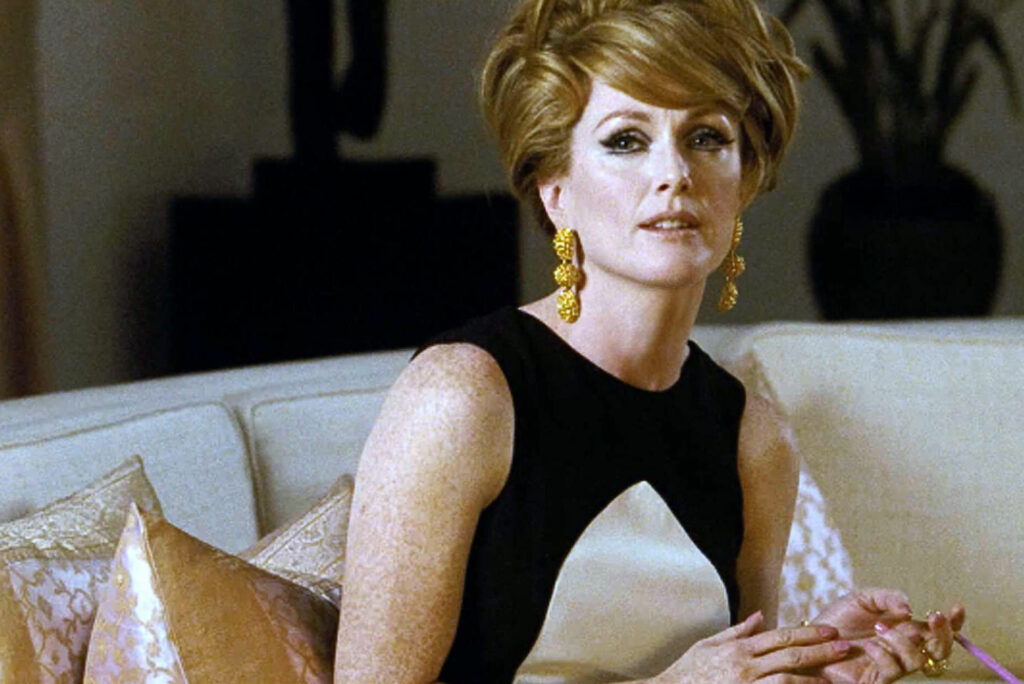
JL: So it was always creativity, new challenges and inspiring collaborators that drove you forward at this stage?
AP: Yes. The financial aspect of it never really factored in. I knew that if I went down the commercial route – which is easy; I watched a lot of colleagues end up doing commercials for TV and stuff – then I would get addicted to that comfortable lifestyle. I mean, it’s worked out fine for me, but I always chose a project that would be unique. In the last film I worked on, I had 40 people in my department. The new film I’m about to start work on will have just me and two other people, with a budget of only $30,000 for costumes for the whole movie. The average budget for costumes on a big movie is a million plus. And last year I did an off-Broadway play where it was just me and one other person. This approach is crucial to how I try to keep my own self relevant to myself; to keep me a little bit hungry, to keep it real.
JL: I was talking to the actor Dan Levy recently and he was describing how intimidating the first days on set shooting can be when you suddenly have to start working closely with huge teams of people you’ve perhaps never met before. How do you cope with that… especially as you have to have quite an intimate relationship with some of those characters very quickly because you’re dressing them?
AP: It is crazy, at least with actors, because we’re the only department that’s like, ‘Nice to meet you, can you take your clothes off please?’ It is very intimate. But it’s really about building trust, listening to the people you’re working with. It was so hard during Covid when we were masked. And what I ended up doing when filming Don’t Worry Darling was requesting Zoom calls with the actors first so I could get to know them, and read them. Then by the time they came in to the room and we were all masked you already had an understanding.
JL: Do you still get nervous?
AP: I still get butterflies. I can’t sleep the first night before shooting. The night before I was due to work with Madonna for the first time, I was a wreck. I didn’t sleep at all. But at the same time I still get so excited with what I get to do. And still recognise how lucky I am being out there working with such creative people; being in Paris with Madonna and going out to dinner with Jean Paul Gaultier, receiving three Oscar nominations. I mean, there’s just so many ‘pinch me’ moments.
JL: Which was the first mainstream movie you got work on?
AP: My first big break was doing The Crow [Alex Proyas’ 1994 thriller] but I couldn’t embrace that as a success because it was a tragedy. It was Brandon Lee [who was accidentally killed on set] who had invited me to work on it. So the joy of it was completely demolished. Then I did a small film for HBO directed by Christopher Guest called Attack of the 50-Foot Woman and then I worked on Tank Girl. But I would say that The People vs. Larry Flynt was my first legitimate character-driven, non-genre film. I felt like I could earn my parents’ respect because I had seen Milos Forman films with them back in the day. So that was a seminal moment for me.

JL: When we first met you were working on the Kingsman movies with Matthew Vaughan and I remember coming on set and I was gobsmacked at the number of lead actors you had to work with, extras you had to dress, the multitude of different costume trucks on the lot. The logistics you had to manage were extraordinary.
AP: I dare say Matthew Vaughan is unique in terms of logistics. I mean, he has a nimble quality in the way that he directs. So he directs these large-budget films, but with the attitude and the nimbleness of an independent filmmaker. So nothing’s too challenging, nothing’s not doable. Both of those first two Kingsman movies were really, really logistically challenging, and they took a toll on all of us who were making the films, because the thing about Matthew, and I think the reason why he’s such a brilliant filmmaker, is he takes so many risks and he does kind of the unthinkable.
JL: You not only had to create the costumes for the movie, but you also knew they were going to become the first of a legitimate menswear collection that would be sold in stores. And that Kingsman clothing brand still exists today. Is it easier creating costumes that will end up in a storage depot or ones that you know will live on in the real world?
AP: I was really excited about that challenge. It’s quite sad at the end of a movie when you put the costumes away in a box. I don’t keep the costumes, the film studio does. You put them in a box, they go into storage and you usually never see them again. There are a number of film studios that once you wrap a film, they try to recoup money and so sell off costumes. And it’s so sad. There’s also the horrible situation, which has happened to many of my colleagues, and to me a couple of times, where the film studio’s marketing department makes a separate deal with some mass fast-fashion brand and creates a version of the costumes that has nothing to do with you. And it looks like crap. So I thought Kingsman was like a litmus test for me. I kind of felt, not that it was altruistic, but that if I can make this happen, it could be a little bit of a benchmark for my colleagues.
JL: Are there no proper costume archives?
AP: Well, you know, in different ways. Madonna has a really impressive archive, and I’m sure people have seen the Céline Dion documentary in which she shows the camera crew around her archive. Madonna’s is even bigger. So you have artists who have personal archives. And then you have ones like those at the V&A or the Metropolitan Museum. They have fashion archives where they have certain film pieces that they feel are culturally relevant, but they’re not necessarily pure costume archives. You also have a lot of private collectors. And there’s the Academy of Motion Picture Arts and Sciences in Los Angeles. They’ve started a really beautiful costume archive. I actually have donated bits and bobs that I have been allowed to keep by producers on certain films.
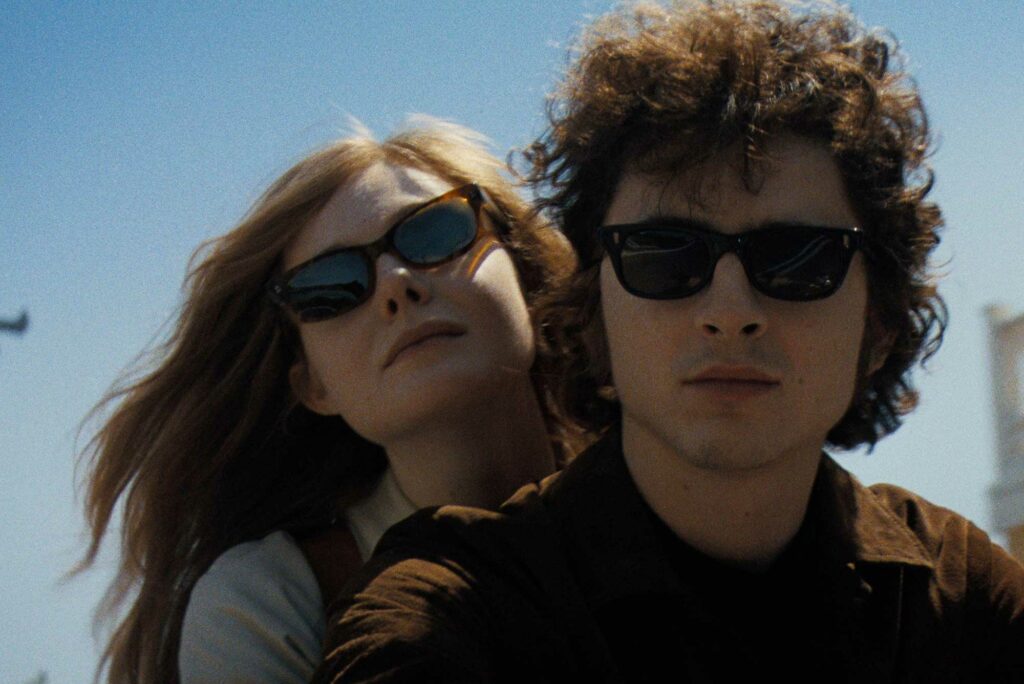
JL: Well let’s jump to two new movies with extraordinary costumes but in very different ways. A Complete Unknown tells the story leading up to Bob Dylan’s first appearance with electric instruments at the Newport Folk Festival in 1965. It’s directed by James Mangold with whom you also worked on Walk the Line nearly 20 years ago. Is it easier or harder creating costumes for a real character who is known and instantly recognisable or a fictional one?
AP: Well, being a massive Bob Dylan fan – he is part of the soundtrack of my childhood – I just felt what was needed in my bones. I started reading biographies about him and those who were in his circle, and I learned a lot. Our film is very specific; set over a period of four years at the beginning of the 1960s, it’s about the making of Bob Dylan, the poet, the icon, the rock star that we know today. It’s like his origin story. Personal research is more challenging. It’s like being a detective. The best thing for me as a designer is what I call the character arc. In this film it’s very succinct. The changes he went through from 1961 to ’63 to ’65, they’re very definitive.
The hardest thing to get right for period films is denim because it changes so much and often doesn’t exist in that form anymore. Bob wore denim throughout his life and to this day. It was clear from early research he wore predominantly Levi’s. Luckily, I have worked with Levi’s previously and know the wonderful people that work there . That was the first call I made a couple years ago when I started researching for the film. I reached out to them asking if they could help me identify what Bob was wearing, denim-wise. So together with the help of the team in the archive and design dept. at Levi’s I was able to create Bob’s denim story. First you see him early on in “worker” style “carpenter” jeans like Woody Guthrie wore, and then in 1962/63 he starts wearing the more recognizable Levi’s. His girlfriend at the time, Suze Rotolo, who’s on the cover of the album The Free Wheelin’ Bob Dylan, make a denim insert for his jeans so that they would fit around his boots because he always wore boots. So, in 1963, Bob Dylan wore the first flares. And then he ended up wearing very skinny jeans in 1965, which Levi’s recreated for us. Bob’s denim jeans and boots visually inform and express his style evolution in ‘becoming’ the Bob Dylan we know today.

JL: When you’re in the process, do you know that you’ve truly caught the character in the hair, make-up, and costume?
AP: Well, I can’t speak for Timmy [Chalamet, playing Dylan]. But I can say two moments when we first thought it was there. I did many fittings with Timmy – he has almost 70 changes in the film – but I would say the first day he brought a guitar to the fitting was really helpful to see how he would stand with the instrument. And when I put sunglasses on him in a fitting, that was very exciting. And then when we got closer to shooting and Jamie Leigh McIntosh, who’s the hair designer, was working on the wig – he wasn’t always wearing a wig; he also used his own hair – but that was a moment.
Timmy is remarkable. I mean he had to learn the lyrics for 40 or 50 songs for our film. So when he would come to the fittings he was very comfortable. You know, he would sing and play the guitar. And that really helped me a lot. And we played the music and we kind of went into this sacred space. Fittings are when the character comes alive.
JL: You created the costumes for Joker: Folie à Deux, which reunites you with Joaquin Phoenix who you worked with on Walk the Line. How do you bring alive such visually compelling characters as Joker and Harley Quinn?
AP: I was the new kid on the block with that movie. The first Todd Phillips’ Joker was designed by the brilliant Mark Bridges, a friend of mine. So I had the great good fortune to build on what he had created. On the first day when I was working with Joaquin he came in and said, ‘Well, I guess we only work on movies with music in them.’ It’s not a musical, but there are a lot of songs. Music is intrinsic to the way this story moves. It was lovely to be reunited with him in such a different role. I admire him so much and I love him as a person. Just being around Joaquin, it’s like you want some of that to rub off on you. He’s brilliant. He’s very generous and kind. He would hate that I’m saying this. He’s just very respectful, and he’s committed.
JL: And, of course, you also worked with Lady Gaga. Is it easier or harder working with someone who has a strong sense of style, clothes and costume drama herself?
AP: I have to say that working with Stefani – it’s hard for me to call her Lady Gaga because it sounds weird – will be one of my career highlights. She’s so generous, so committed, so willing… and so much fun. And she was a new kid on the block, too, for this movie and so we bonded over that. We did multiple fittings and the journey to finding her character in the costumes was just so rewarding. It helped that she is so used to developing characters on stage, that she’s so smart, and she has such a great level of references that we were able to riff on a higher level than with most people. She was 100 per cent committed. I mean, Lady Gaga was left at the door. This was all about Stefani, the actress. She was everything that I could hope for when I walk into a fitting room with an actor. She was willing to try, and open to, everything. And also had great ideas of her own.
JL: Your final question is a tough one. If you were stranded on a desert island with only one of the films you’ve worked on, which would it be?
AP: Wow. That’s impossible. It depends on what my mood is at the time. But W.E. [the 2011 film about Wallis Simpson and the Duke of Windsor directed by Madonna, for which Arianne was nominated for an Academy Award]. I’m very proud of that movie. Working with Madonna as a director is my favourite way to work with her because she’s just such a great partner and just so engaging. Otherwise probably A Complete Unknown and A Single Man are the follow-ups – A Single Man is a beautiful, beautiful film that I think is also an important one. And also, I hope, a film I’ve yet to make.
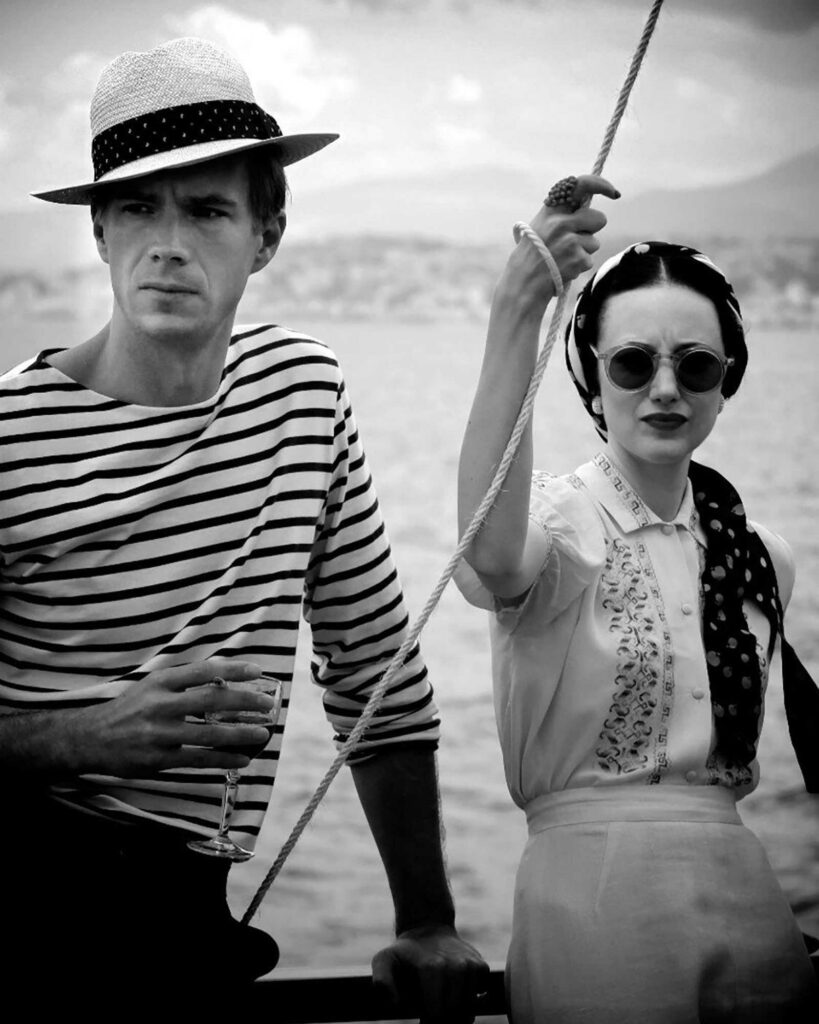
Words by JEREMY LANGMEAD
A Single Man / Once Upon A Time in…Hollywood / Joker: Folie à Deux / A Complete Unknown


